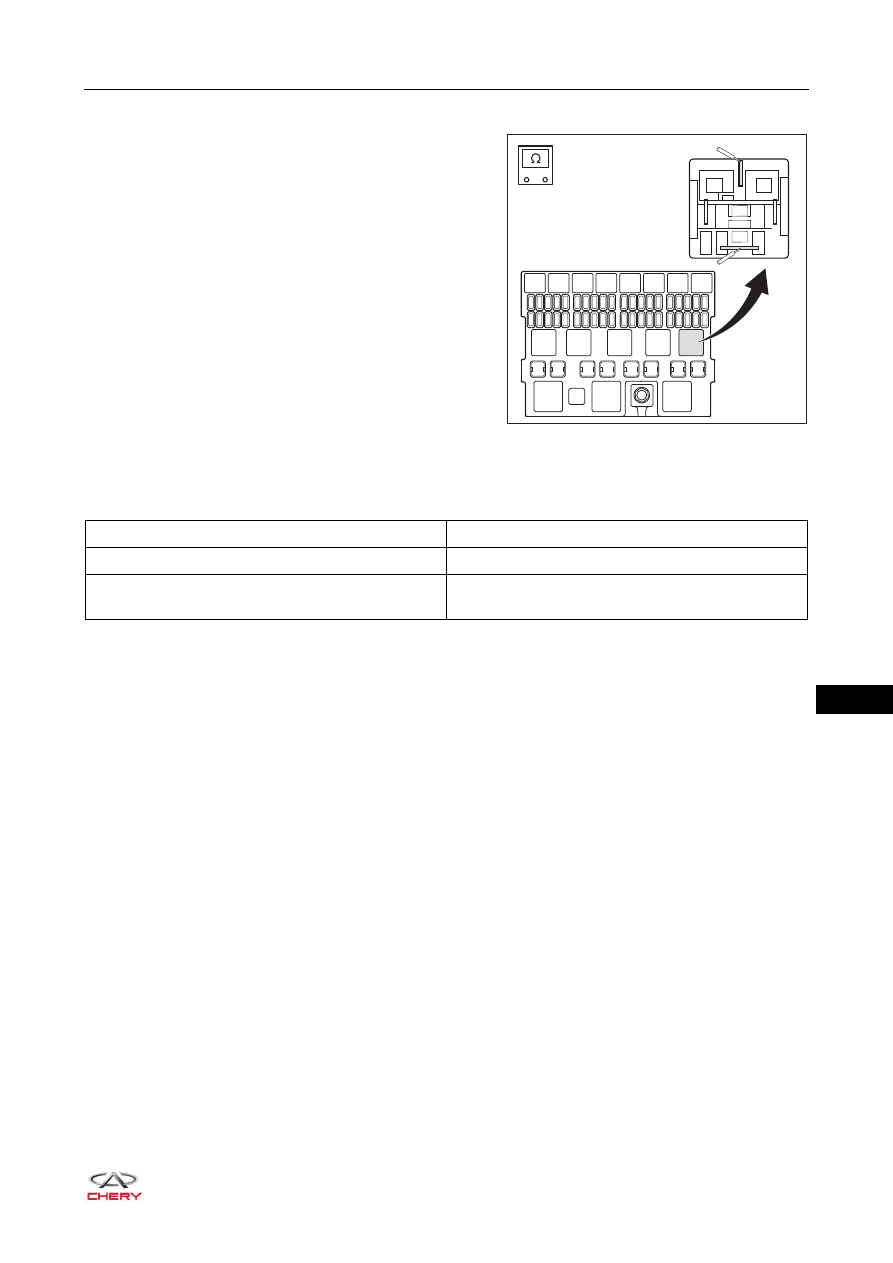Chery Tiggo 5 (T21). Service manual - part 170

15–
15
15
Starter Relay Inspection
1. Remove the starter relay from engine compartment fuse
and relay box.
2. Check starter relay.
a. Using a digital multimeter, measure resistance according to the value(s) in the table below.
Standard Resistance
If result is not as specified, replace the starter relay.
RT21150040
-
+
30
85
86
87
Start relay
ERL Y09
Multimeter Connection
Specified Condition
30 - 87
10 kΩ or more
30 - 87
Below 1 Ω (when battery voltage is applied to
terminals 85 and 86)